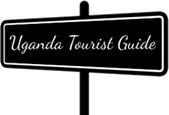The 5,109 (about 16,761 ft) snow capped Mountains of the moon are located in western Uganda bordering with Democratic Republic of Congo. The Rwenzori is made of number of mountain ranges with differences in heights that include mount Stanley (5,109m), Mount Speke(4,890m), Mount Baker (4,834m), Mount Emin (4,798m), Mount Gessi(4,715m) and Mount Luigi di Savoia (4,627m): Mount Stanley is the highest of these ranges and third highest in Africa. It’s the largest of all ranges with Margherita peak being its highest peak and point of range with an estimate of 5,109m (16,763), mount Stanley is made of other various peaks that include Alexandra, Alberta, Savoia, Ellena, Elizabeth, Phillip, moebius and Great Tooth at 4,603 meters high. Mount Speke that lies in the legendary mountains of the moon that was gazetted as Rwenzori National park in 1991 is the second highest of the Rwenzori Mountain ranges consisting of multiple jagged peaks of vittorio Emanuele, Ensonga, Jothnston and Trident. Mount Speke forms part of the triangle that encloses the upper Bujuku valley.
Rwenzori mountain range is a home to the konjo and Amba peoples and word Rwenzori in their Bakonjo language means “Rain maker or Rain Mountains”. Rwenzori is famous for its 5 vegetation zones ranging from forest, Alpine, grassland to snow cape and for their unique animal population with forest elephants, several primates coupled with endemic bird species. Presence of the unique giant groundsel and giant lobelia makes the Rwenzori one of the best mountains in the world that tourist would wish by all means to climb. Its 5 Vegetation zones of the grassland (1000-2000m), montane forest (2000-3000m), bamboo zone (2500-3500m), Heather zone (3000-4000m) and the afro- alpine moorland (4000-4500m) suitable for the plant species such as lobelia and groundsels make Rwenzori Mountain unique to the equatorial type alpine Africa.
Brief History on Mountain Rwenzori:
The Rwenzori ranges came into formation back in the Pliocene period about 3 and half million years back. It was formed from the uplifted blocks of crystalline rocks of a combination of gneiss, amphilbolite, granite plus the quartzite that where brought up as result of forces from deep within earth crust. The end result of the uplifts lead to the formation of the three African great lakes in the Albertine rift valley that includes Albert, Edward and George.
It is believed that during research by great geographers like the Ptolemy a Greek geographer back in 150 AD referred to the snowcapped the only of its kind in Africa by the Name lunae montes meaning “Mountains of the moon” now Rwenzori Mountains. This research touched a number of explorers with the expedition dreams of sighting the magic’s on Rwenzori with Henry Morton Stanley as the first modern white man to see Rwenzori back in 1889.
The first attempt to climb this mountain by non-African person was made by William Grant Stairs whom managed to reach 3,254m about (10,676 ft). The second expedition was by Duke of the Abruzzi with a group consisting of biologist, surveyors, one geologist, and photographers together with a good number of porters. It’s Duke that made the first ascents of all major snow and ice peaks mapping their complex geography and naming them with Italian names with Vittorio sella a photographer taking a number of the ever first photographs showing a snowcapped and a now- vanished world.
In 1941 efforts were made to preserve this glacier and snowcapped mountain believed to be highest and most permanent water catchment area with streams flowing into the great lakes constitutes permanent sources of water into river Nile also believed to present a small number of IUCN Red Listed animals and plants. Gazzeted as Rwenzori Mountains national park in 1991 and was made a World Heritage Site in 1994 covering an area of over one hundred thousand hectares with an aim of provide natural habitat for endangered mountain species and a rich diversity of flora among the giant groundsel and giant lobelia.
Mountain Rwenzori park provides a stunning views of glaciers and the snowcapped mountains a few distance from the equator with its unique alpine flora that includes endangered species to the Albertine Rift of higher altitude zones and supplies of resources to the local community and of cultural heritage importance being a home to the Bakonzo, Batwa and Baamba. The park is very unique with the combination of glaciers, V- shaped Valleys, snowcapped peaks magnificient waterfalls with faster flowing rivers, blue and green lakes coupled with over 217 bird species, forest elephants eastern chimpanzee, the endangered I’ Hoest’s monkey. It’s famous for its endangered Rwenzori black- fronted and red duiker very localized subspecies to this park.
Challenges- However great challenges on climatic change remain affecting Ruwenzori’s glaciers, research shows that the named 43 glaciers divided among the 6 mountain ranges about 7.5km2 in 1906, only half of these are remaining and seen on the three mountain ranges covering an area of 1.5km2.








